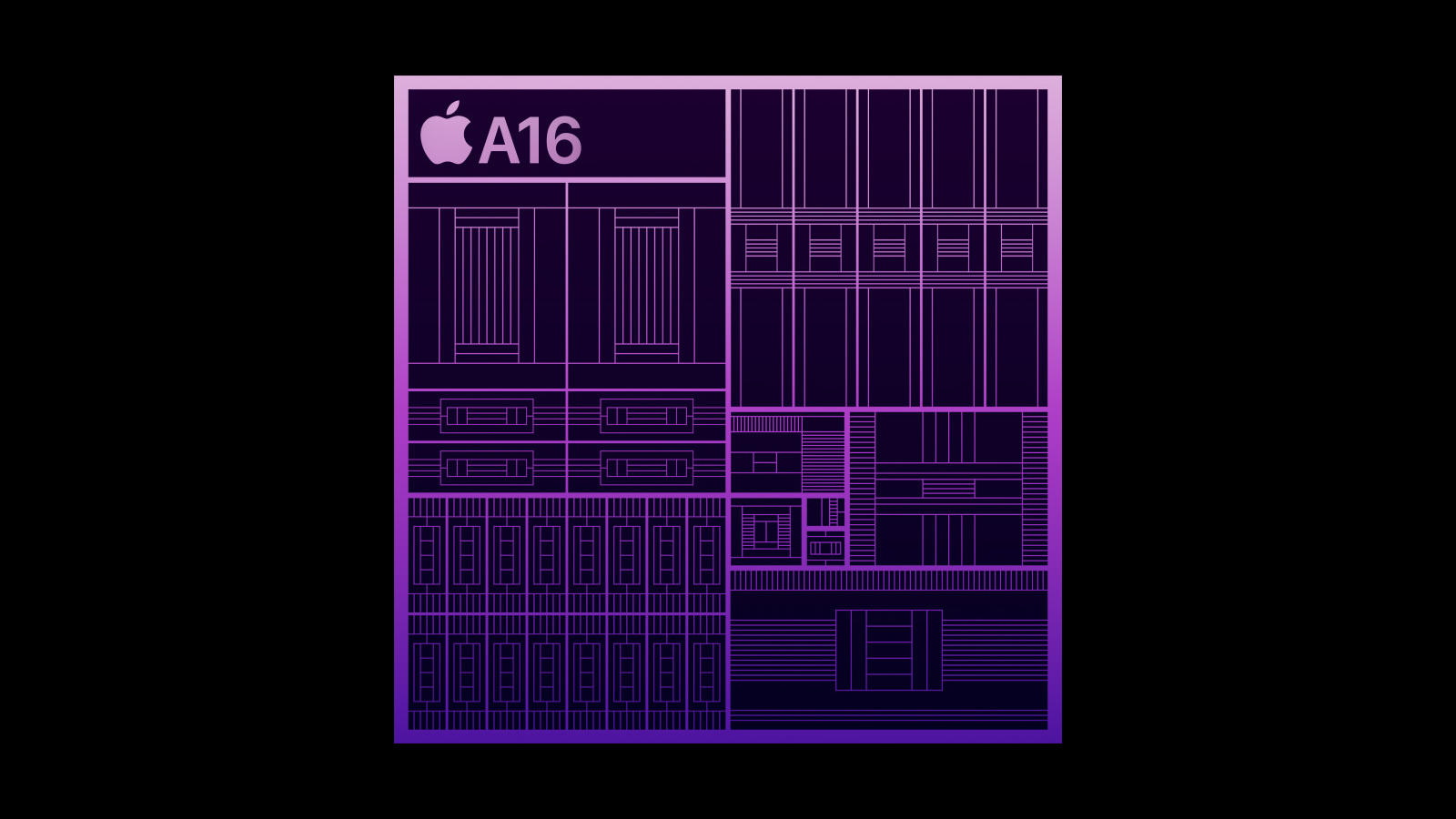A16 Bionic vs A15 Bionic — what it means for the new iPhone 14
Here's everything we know about the A16 Bionic chipsets coming to the iPhone 14 Pro and Pro Max

When Apple introduces a new iPhone every fall, you've generally been able to count on the fact that the new phone, whatever the model, is going to feature the company's latest mobile silicon. And given the edge Apple enjoys with its chips over rival phones, picking up any new iPhone means you're getting one of the best phones for performance, whether you grab the tiniest iPhone mini or the mightiest iPhone Pro Max. Naturally, you'd think an A16 Bionic vs. A15 Bionic transition for this fall's handset release would mean the same thing.
But that won't be the case with the iPhone 14 launch. For the first time ever, Apple will be using different chips for its different phones.
The newer A16 Bionic will power the iPhone 14 Pro models — the 6.1-inch iPhone 14 Pro and the 6.7-inch iPhone 14 Pro Max. The less expensive new iPhones coming this fall, including the iPhone 14 and iPhone 14 Plus (again 6.1- and 6.7-inch respectively), will instead use a variation of the A15 Bionic chip Apple introduced as part of the iPhone 13 release in 2021.
It's a big change, and it makes an A16 Bionic vs. A15 Bionic comparison more relevant than ever, as knowing the differences might influence which iPhone model you ultimately buy.
Put another way, if the A16 Bionic chip in the iPhone 14 Pro is going to give you a big usable performance boost over the less expensive iPhone 14 with the A15 Bionic, that's something you'll want to know.
It's worth noting that we don't know everything about the iPhone 14 internals yet, but here's how the A16 Bionic vs. A15 Bionic comparison is shaping up with what we know so far, and what it means for the iPhones 14 models.
A16 Bionic — what we know
While there was speculation that the A16 would be built on the same 5-nanometer process as the A15 system-on-chip feature in the iPhone 13 models, we now know that the A16 Bionic will actually be built on a 4-nanometer architecture.
Sign up to get the BEST of Tom's Guide direct to your inbox.
Get instant access to breaking news, the hottest reviews, great deals and helpful tips.
If you're thinking about buying the iPhone 14 Pro or iPhone 14 Pro Max, this is great news in terms of performance, as the smaller architecture will allow for more transistors (16 billion in total), making the A16 faster and more efficient than its predecessor.
We haven't run any tests or seen any performance metrics yet, but when unveiling the A15-powered iPhone 13 models last fall, while Apple didn't offer a performance comparison between its new silicon and the A14 Bionic chipset before it, an Anandtech study found that the A15 performed substantially better than its predecessor. Given those two chipsets both used 5-nm architecture and the A16 uses 4-nm, we can reasonably expect noticeable performance increases in the more expensive A16 handsets simply based on these figures alone.
News from Apple, though, is that the increases are indeed a reality. The A16 repeats many parts of the A15's core design, featuring a 6-core CPU with two performance cores and four efficiency cores. Yet while the A15 was (and is) already pretty quick, the A16 is up to 40% faster than rivals like the Qualcomm Snapdragon 8 Gen 1, all while consuming 20% less power than its predecessor.
The A16 will also feature a 5-core GPU, just like the A15. However, the bandwidth between the GPU and CPU has been increased by 50%. This allows the two processing units to communicate better with one another by increasing the data that can flow between then at any one time, benefiting performance when using graphically intensive apps and gaming, especially at the high refresh rates of the 120Hz Pro and Pro Max. There's also a display engine bundled into the mix, to help with the performance of the Dynamic Island (more on that a little later).

The A16 also features a 16-core neural engine, just like its predecessor, which Apple promises can handle around 17 trillion operations per second and 4 trillion operations per photo. This essentially increases the A16's machine learning and AI capabilities, and alongside an upgraded imaging processor, will primarily benefit the automatic optimization of photos from the enormous 48MP sensor.
The A16 Bionic — what we don't know
Primarily, we don't yet know anything about what RAM will feature on the A16 Bionic SoC. No surprise there, as Apple is always very tight lipped about this at launch.
It's was rumored that the iPhone 14 Pro will switch to LPDDR5 RAM, an upgrade over the LPDDR4x memory current iPhone 13 models use. That hasn't be confirmed or denied. But regardless, we've never found RAM to be an issue with iPhones.
iPhone 14 and the A15 Bionic
So that leaves the iPhone 14 and iPhone 14 Plus making do with last year's chipset. Of course, when we say those two phones feature the A15 Bionic, it doesn't mean the same chipset powering the iPhone 13 and iPhone 13 mini.

Rather, the iPhone 14 and iPhone 14 Plus will "graduate" to the A15 Bionic that the iPhone 13 Pros use. That's the one with the 5-core GPU.
Apple is still calling both chips the A15 Bionic, so you'd easily miss the difference if you weren't looking hard at the tech specs. It does mean, though, that the iPhone 14 and iPhone 14 Plus will perform better, at least graphically speaking, than then iPhone 13 and iPhone 13 Mini.
If Apple has indeed equipped the iPhone 14 with 6GB of RAM like the iPhone 13 Pro had — the iPhone 13 features 4GB — that would also give the new phones performance a nudge.
Put another way, you'd expect that an A15 Bionic-powered iPhone 14 would see a performance improvement over the standard iPhone 13 model, even if the gap widens between the iPhone 14 vs. the iPhone 14 Pro, though some observers argue that kind of gap wouldn't be as big a deal as you might think.
A16 Bionic vs. A15 Bionic: Will it matter?
Obviously then, the iPhone 14 Pro models are going to be faster than the cheaper iPhone 14 handsets, and faster again than the iPhone 13 range. This in itself is a departure from iPhone ranges of the past, which generally turn in comparable performance, give or take the RAM Apple includes in each phone.
In this sense, an A16 Bionic vs. A15 Bionic divergence will matter if you're looking for as much raw performance as you can get. However, it probably won't make as much difference as the other changes Apple has made to its Pro phones.
Besides the 48MP camera upgrade, the new Pro models are losing the notch from their display, replacing it with a Dynamic Island — essentially an interactive box around the front camera which changes size and form based on different notifications, alerts and activities. Like the previous iPhone 13 Pro models, they're also getting an upgraded refresh rate of up to 120Hz which, in reality, is a massive selling point and arguably more influential to many potential customers than processing power. Having used the fast refresh rate on my iPhone 13 Pro Max, I could not go back to significantly slower screen.
Those tangible differences will likely be far more significant in day-to-day use than the boost in performance the A16 offers, though having that extra processing oomph is will certainly be a mark in the iPhone 14 Pro's favor for anyone with the spare cash.
Philip Michaels is a Managing Editor at Tom's Guide. He's been covering personal technology since 1999 and was in the building when Steve Jobs showed off the iPhone for the first time. He's been evaluating smartphones since that first iPhone debuted in 2007, and he's been following phone carriers and smartphone plans since 2015. He has strong opinions about Apple, the Oakland Athletics, old movies and proper butchery techniques. Follow him at @PhilipMichaels.
- Peter WolinskiSenior Editor, Reviews & Cameras

